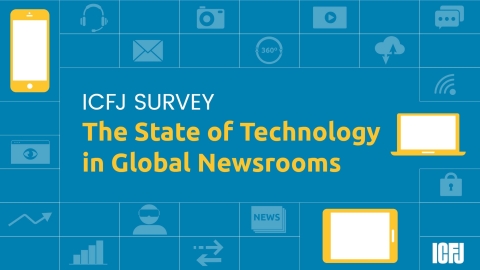
The executive summary of the first-ever global survey on the adoption of new technologies in news media is now available in six additional languages: Arabic, Chinese, Portuguese, Russian, Spanish and Urdu.
View the translated reports here.
The results from The State of Technology in Global Newsrooms, a study conducted by the International Center for Journalists (ICFJ), revealed that journalists and newsrooms lack the technology skills to meet the challenges they face.
It also showed which regions are the leaders and laggards in digital technology adoption, among other findings.
While the disruptions in today’s newsrooms have been widely examined, the study focused on a missing link: how journalists worldwide are using technology. It is based on responses from more than 2,700 newsroom managers and journalists from 130 countries, who provided responses in 12 languages.
To read the executive summary in Arabic, click here.
To read the executive summary in Chinese, click here.
To read the executive summary in Portuguese, click here.
To read the executive summary in Russian, click here.
To read the executive summary in Spanish, click here.
To read the executive summary in Urdu, click here.
View the full report, and see highlights from the survey on Medium.